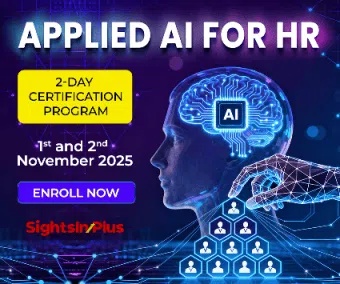India has made significant strides in literacy, workforce inclusion, and diversity, yet challenges remain in bridging skill gaps, gender equality, and equitable access to opportunities-
- Rural literacy rose from 67.77% (2011) to 77.5% (2023-24). (India Today, Dec 2024)
- Female literacy in rural areas improved from 57.93% to 70.4%. (India Today, Dec 2024)
- 40% of STEM students in India are women, yet only 16% hold faculty positions.
- Employment of Persons with Disabilities (PwDs) stands at 36%, with a stark gender gap: 47% men vs. 23% women. (Observer Research Foundation, Dec 2024)
These statistics underscore the progress made while highlighting persistent discrepancies.
Why Diversity Matters
Let’s set aside the business case for a moment. Diversity isn’t just about innovation and productivity; it’s about representation. Our customers, suppliers, and partners are diverse—shouldn’t our workforce reflect that too?
What is Diversity?
Diversity encompasses differences in region, background, religion, gender, sexuality, generation, and disability. It’s about creating an ecosystem where everyone has a seat at the table.
Cultural Challenges to Diversity in India
A 2016 study identified six key diversity challenges, which remain relevant today:
- Workforce re-entry difficulties (Collins & Abhichandani, 2016)
- Tension between autonomy and collective identity (Alazaraja & Wilson, 2016)
- Prejudice based on skin color (Sims & Hirulayraj, 2016)
- Employment barriers for disadvantaged groups (Haynes & Alagaraja, 2016)
- Work-life balance struggles for dual earners (Munn & Chaudhari, 2016)
- Gender inequality (Batra & Reio, 2016)
These challenges are deeply rooted in India’s cultural norms, religious ideologies, and socio-economic structures. They show in both visible (gender, skin color) and invisible (biases, economic status) forms.
Hofstede’s Cultural Model and Its Workplace Impact
Geert Hofstede’s cultural dimensions theory provides a framework for understanding how national culture influences people’s behaviors and workplace interactions. His model identifies key dimensions such as power distance, individualism vs. collectivism, masculinity vs. femininity, and uncertainty avoidance, which shape societal norms and expectations.
In India, high power distance and collectivism deeply affect workplace dynamics, reinforcing hierarchy, restricting open discussions, and shaping gender roles. Understanding these cultural dimensions is crucial in designing DEI strategies that are practical, sustainable, and culturally relevant to the Indian workforce.
Power Distance and Gender Inequality
Hofstede’s research (2001, 2005) classifies India as a high-power distance culture, where hierarchy and inequality are widely accepted. This results in:
- Caste-based privilege structures
- Regard to authority, limiting open dialogue
- Gendered roles, reinforcing male dominance in leadership
A woman’s journey in the workplace is particularly challenging in such a hierarchical and patriarchal society.
Intersectionality: A Complex Web of Identity
Imagine an individual who is disabled, from a marginalized caste, LGBTQIA+, and male. Finding acceptance, let alone opportunities, is a struggle. Many individuals still hesitate to disclose their identities, fearing societal and workplace backlash.
Collectivism: The Burden of Perception
India is high on collectivism (Wang et al., 2005), where family and societal expectations often outweigh individual aspirations.
- Women step back from careers due to family obligations.
- LGBTQIA+ individuals struggle with disclosure, fearing social repercussions.
Connecting Employability Trends with DEI and Cultural Context
India’s rising national employability rate (54.81) reflects progress, yet gender disparities continue while men’s employability is projected to rise (53.5%), women is expected to decline to 47.5% (India Skills Report,2025). This decline isn’t just a workforce issue, it’s deeply connected to societal norms, power distance, and cultural expectations.
High collectivism often means women prioritize family obligations over career growth and deep-seated biases limit opportunities for marginalized groups, including PwDs and LGBTQIA+ individuals. The stark contrast between women’s STEM enrollment (40%) and their representation in faculty positions (16%) further highlights how cultural norms shape professional trajectories.
To sustainably improve employability, DEI strategies must align with social realities, ensuring that inclusion efforts translate into real workforce participation and career growth opportunities.
The Need for a Contextual DEI Approach
We cannot blindly replicate global DEI agendas. India’s social fabric is unique, requiring solutions rooted in its cultural and economic reality. We can leverage the huge potential of Indian workforce by embracing diversity in our workplace
Rethinking DEI in Organizations
- DEI is not a program—it’s a mindset.
- Organizations should align DEI strategies with their partners, suppliers, and workforce realities.
- A global benchmark should not dictate India’s DEI approach.
- Inclusion has to be a bedrock to strengthen and sustain diversity.
- DEI goes beyond dashboards.
- Metrics matter but forcing numbers does not create real inclusion.
- Diversity should never be seen as a compromise on meritocracy.
- Women must take charge.
- Enough with token training programs—take on challenging projects.
- Women’s Day should not be about cake-cutting; it should focus on career growth and opportunities.
- Inclusion must be natural.
- If we do not exclude women, PwDs, or LGBTQIA+ individuals as customers, why debate their hiring?
The Road Ahead
India is a global talent powerhouse. Instead of debating DEI’s necessity, organizations should leverage the country’s diversity to drive real, sustainable change.
It’s time for action—not just conversation.
References: Alagaraja & Wilson, Sims & Hirudayaraj, Haynes & Alagaraja, Munn & Chaudhuri, Batra & Reio, Hofstede, Hofstede & Hofstede, Wang & Hannafin, Collins & Abhichandani, Dr. Ganesh Visavale
Note: We are also on WhatsApp, LinkedIn, Google News, and YouTube, to get the latest news updates, Subscribe to our Channels. WhatsApp– Click Here, Google News– Click Here, YouTube – Click Here, and LinkedIn– Click Here.



